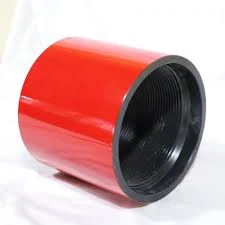- Afrikaans
- Albanian
- Amharic
- Arabic
- Armenian
- Azerbaijani
- Basque
- Belarusian
- Bengali
- Bosnian
- Bulgarian
- Catalan
- Cebuano
- Corsican
- Croatian
- Czech
- Danish
- Dutch
- English
- Esperanto
- Estonian
- Finnish
- French
- Frisian
- Galician
- Georgian
- German
- Greek
- Gujarati
- Haitian Creole
- hausa
- hawaiian
- Hebrew
- Hindi
- Miao
- Hungarian
- Icelandic
- igbo
- Indonesian
- irish
- Italian
- Japanese
- Javanese
- Kannada
- kazakh
- Khmer
- Rwandese
- Korean
- Kurdish
- Kyrgyz
- Lao
- Latin
- Latvian
- Lithuanian
- Luxembourgish
- Macedonian
- Malgashi
- Malay
- Malayalam
- Maltese
- Maori
- Marathi
- Mongolian
- Myanmar
- Nepali
- Norwegian
- Norwegian
- Occitan
- Pashto
- Persian
- Polish
- Portuguese
- Punjabi
- Romanian
- Russian
- Samoan
- Scottish Gaelic
- Serbian
- Sesotho
- Shona
- Sindhi
- Sinhala
- Slovak
- Slovenian
- Somali
- Spanish
- Sundanese
- Swahili
- Swedish
- Tagalog
- Tajik
- Tamil
- Tatar
- Telugu
- Thai
- Turkish
- Turkmen
- Ukrainian
- Urdu
- Uighur
- Uzbek
- Vietnamese
- Welsh
- Bantu
- Yiddish
- Yoruba
- Zulu
Understanding the Role of Casing Pup Joints in Oil and Gas Operations
Understanding Casing Pup Joints A Vital Component in Oil and Gas Operations
In the oil and gas industry, every component of a drilling system plays a crucial role in ensuring efficiency, safety, and reliability. Among these components, casing pup joints may not always be prominent in discussions, yet they serve an essential purpose in well construction and maintenance.
Casing pup joints are short lengths of casing pipe that are typically used to fill the gaps between standard casing sizes, allowing for precise adjustments in the casing string. These joints can vary in length but are usually around 2 to 10 feet. The significance of pup joints becomes evident when one considers the precise engineering required in oil and gas drilling. Any misalignment or improper fit could lead to leaks, blowouts, or catastrophic failures.
Understanding Casing Pup Joints A Vital Component in Oil and Gas Operations
The construction of casing pup joints adheres to strict industry standards. Typically made from high-strength steel, these joints are designed to withstand the harsh conditions present in well environments, including high pressures and corrosive materials. Manufacturers employ processes such as heat treatment and coating to enhance the corrosion resistance of pup joints, ensuring longevity and reliability throughout their deployment.
casing pup joint

In addition to enhancing the integrity of the casing structure, pup joints also facilitate the ease of handling and installation. Their relatively short lengths make them easier to transport and manage on-site, which can be a significant advantage in complex drilling operations. This feature becomes particularly relevant when considering deep-water drilling projects where space and accessibility are often limited.
Another essential aspect of casing pup joints is their role in pressure management. During the drilling process, maintaining optimal pressure is critical to prevent blowouts and ensure safety. Casing pup joints can be strategically placed to allow for the effective management of pressure differentials within the wellbore. This functionality not only secures the safety of the drilling operations but also protects the well from potential damage.
Pup joints also contribute to the overall efficiency of the drilling operation. By simplifying the connecting process between different casing sections, they reduce the time spent on installation. This efficiency is particularly important in competitive oil and gas markets, where time is often equated to cost.
Moreover, as the oil and gas industry increasingly shifts towards sustainable practices, the role of casing pup joints is evolving. They not only fulfill functional demands but also adhere to environmental regulations. The design and manufacturing of these joints now consider aspects such as reduced hazardous waste and enhanced recycling possibilities, contributing to a greener industry.
In conclusion, casing pup joints may be small in size but are critical to the integrity and efficiency of oil and gas operations. Their ability to connect various casing sizes, manage pressure, and enhance ease of handling underlines their significance in drilling operations. As technology and industry practices evolve, casing pup joints will continue to adapt, ensuring they meet the ever-changing demands of the oil and gas sector while contributing to safer and more sustainable drilling practices.
-
Well Casing Extension Couplings – Applications and InstallationNewsJun.06,2025
-
Types of Crossover Subs in Drilling & CompletionNewsJun.06,2025
-
Key Features of High-Quality Tubing Pup JointsNewsJun.06,2025
-
Installation and Maintenance Tips for Steel Couplings for PipeNewsJun.06,2025
-
How to Select the Right Pup Joint for Oil & Gas OperationsNewsJun.06,2025
-
Applications of Stainless Steel Pipe CouplingsNewsJun.06,2025







